.

An Antarctic Outer Coastline margin is any point fronted by sea or annual sea ice (on a nautical or seaward coastline). Journeys using an outer coastline margin must start/end as close as practically possible to sea or sea ice. Any Antarctic journey utilising an outer coastline margin is designated a Full Expedition or Full Crossing (Full refers to full-length). Examples:
Notes:
|
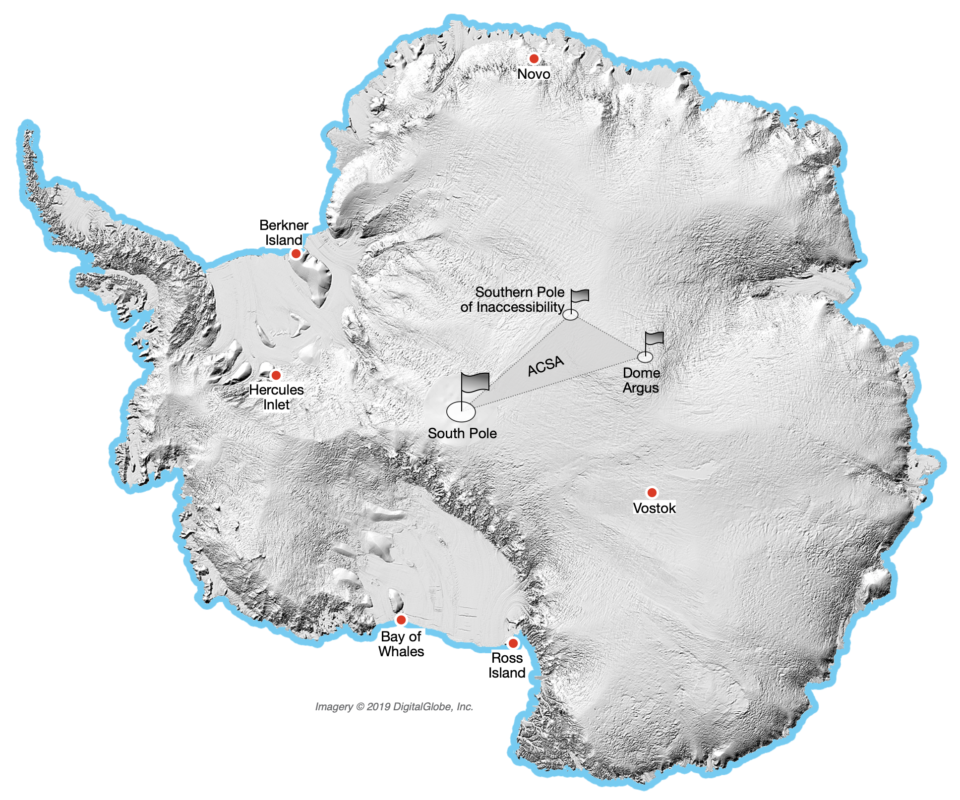 |
.

An Antarctic Inner Coastline margin is typically on a grounding line or zone, the boundaries at which land ice departs the continent and becomes floating shelf ice. Journeys using inner coastline margins must start/end within a grounding zone. Any Antarctic journey utilising an inner coastline margin is designated an Expedition or Crossing. Any journey starting or ending mid-iceshelf is also designated as using an Inner Coastline. Examples:
Note:
|
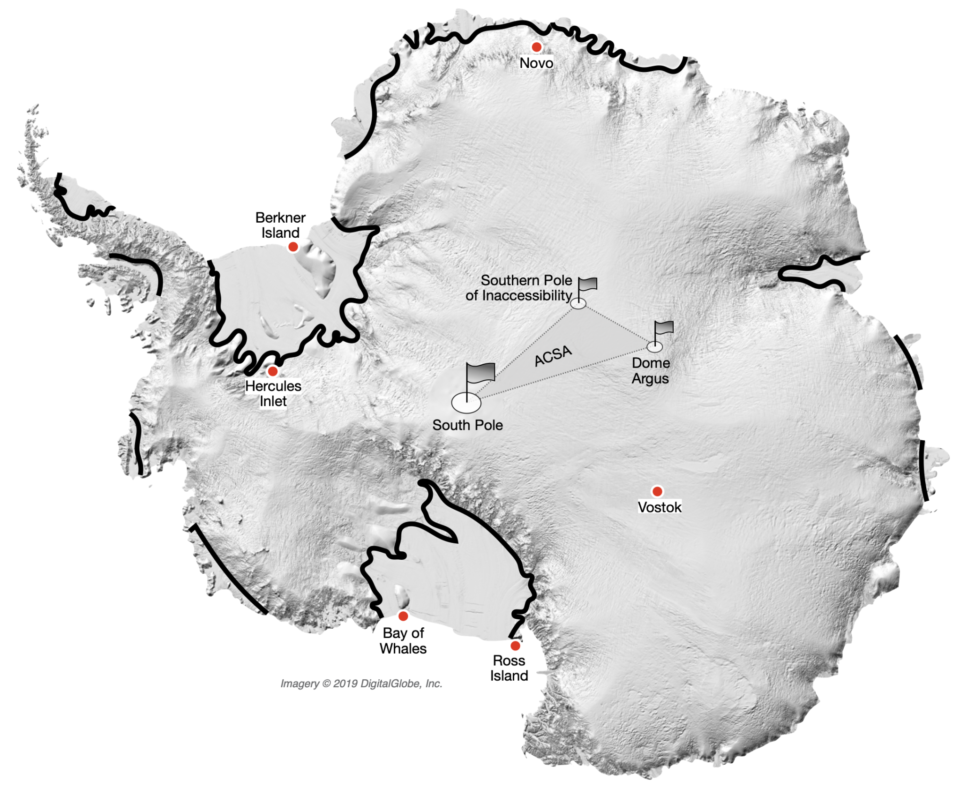 |
.

An Inland (or interior) margin is any point on the Antarctic landmass that is not on a coastline. Any journey utilising an interior margin is designated an Inland Expedition or Inland Crossing. Examples:
Notes:
|
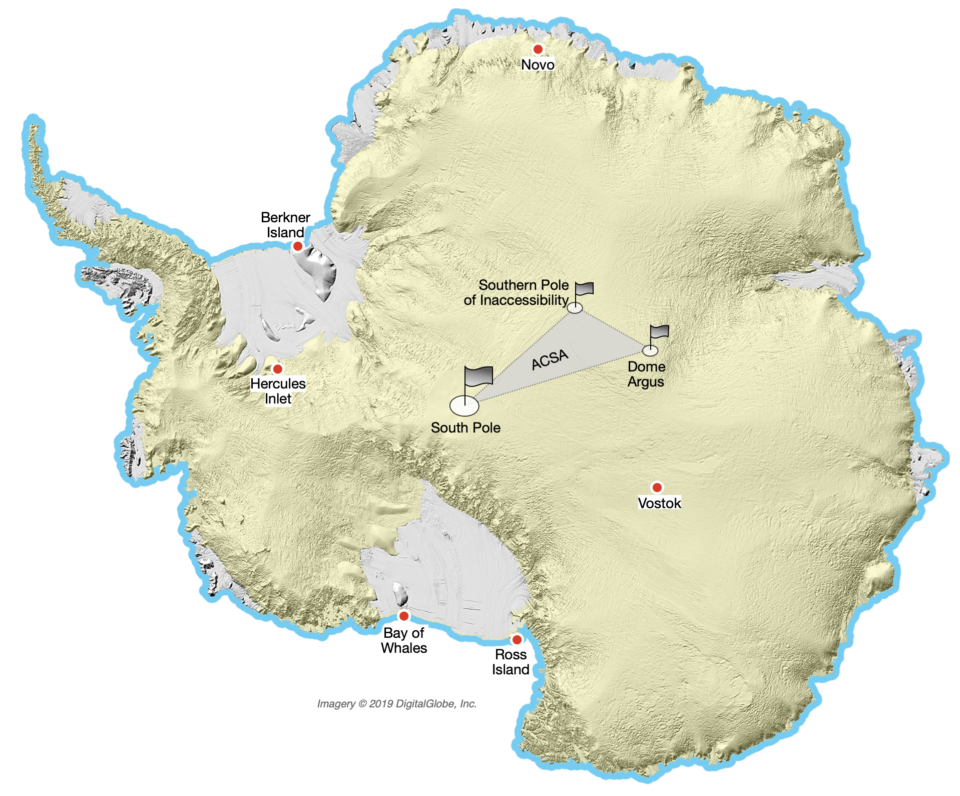 |
.
The following margins represent start/end points that have been used more than once on South Pole expeditions or crossings of Antarctica, either historically or in modern times.
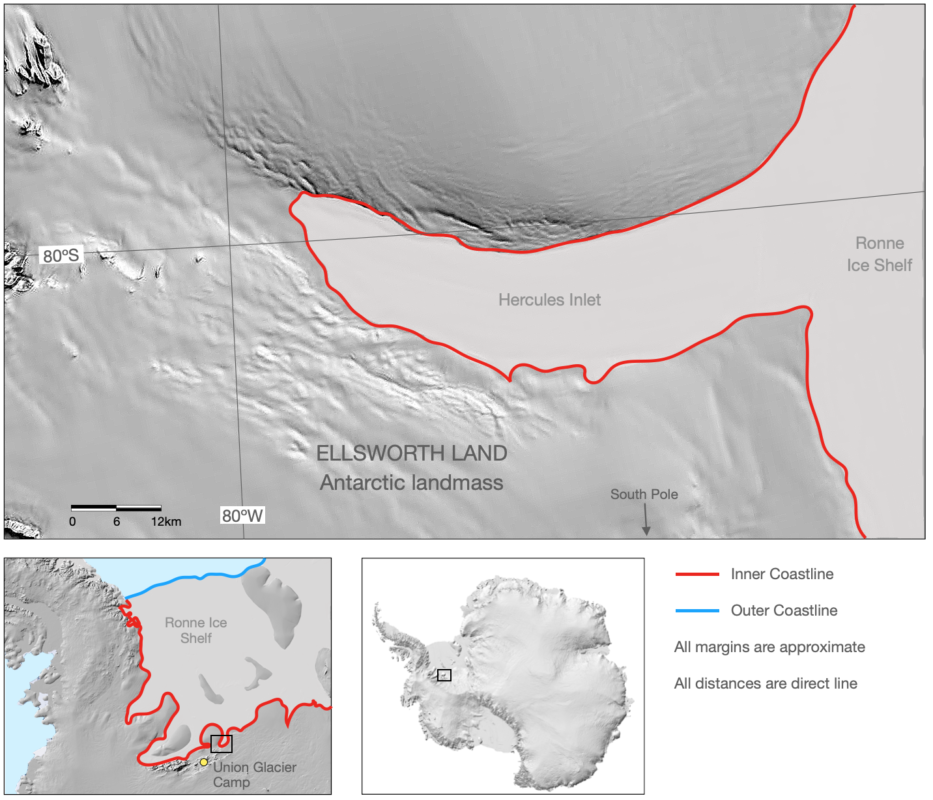
First used in 1988 by Antarctic tourism company Adventure Network International, Hercules Inlet is located in Ellsworth Land in West Antarctica and forms part of the Ronne Ice Shelf’s inner coastline.
Located approximately 65km ESE of Antarctic Logistics and Expeditions’ (ALE) Union Glacier Camp, approximately 685km from the nearest sea and approximately 1120km from the South Pole, Hercules Inlet is the most common start point for South Pole expeditions.
Journeys using Hercules Inlet, and intending to complete a South Pole expedition or crossing of Antarctica, must start/end on the inlet ice.
In good weather the inlet can be easily detected by sighting sloping hills on three sides. This should be the deciding factor when choosing your start/end point.
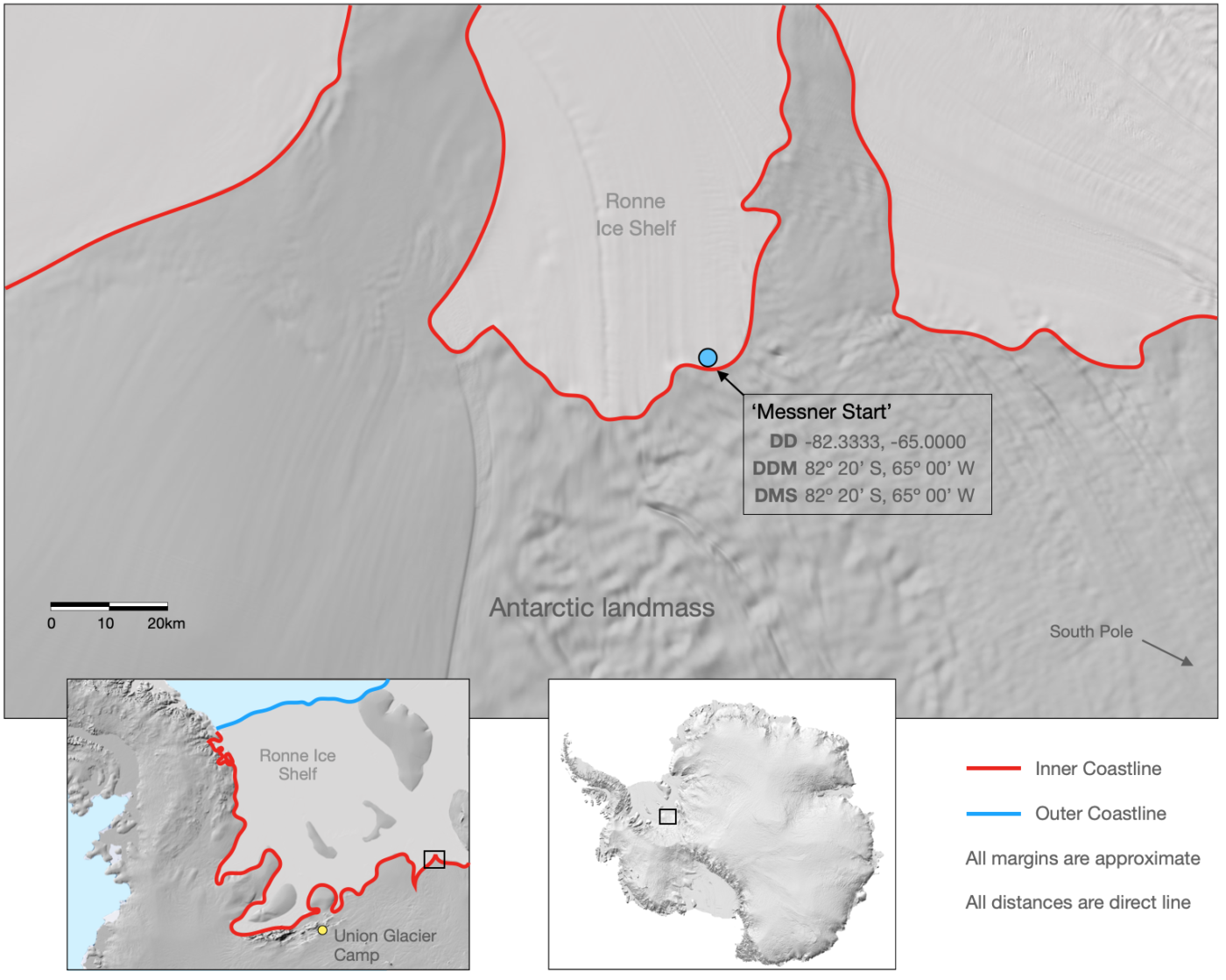
‘Messner Start’ was first used in 2005 by a Norwegian guiding company as an alternative to Reinhold Messner and Arved Fuchs’ start point on their 1988-99 crossing of Antarctica. Successive expeditions have refined this point to its current location.
Located in West Antarctica on the inner coastline of the Ronne Ice Shelf approximately 425km SE of Union Glacier Camp, more than 600km from the nearest sea and 856km from the South Pole, Messner Start is the second most common start point for South Pole expeditions.
Journeys using Messner Start, and intending to complete a South Pole expedition or crossing of Antarctica, must start or end on the Ronne Ice Shelf, typically north of 82º 20’.
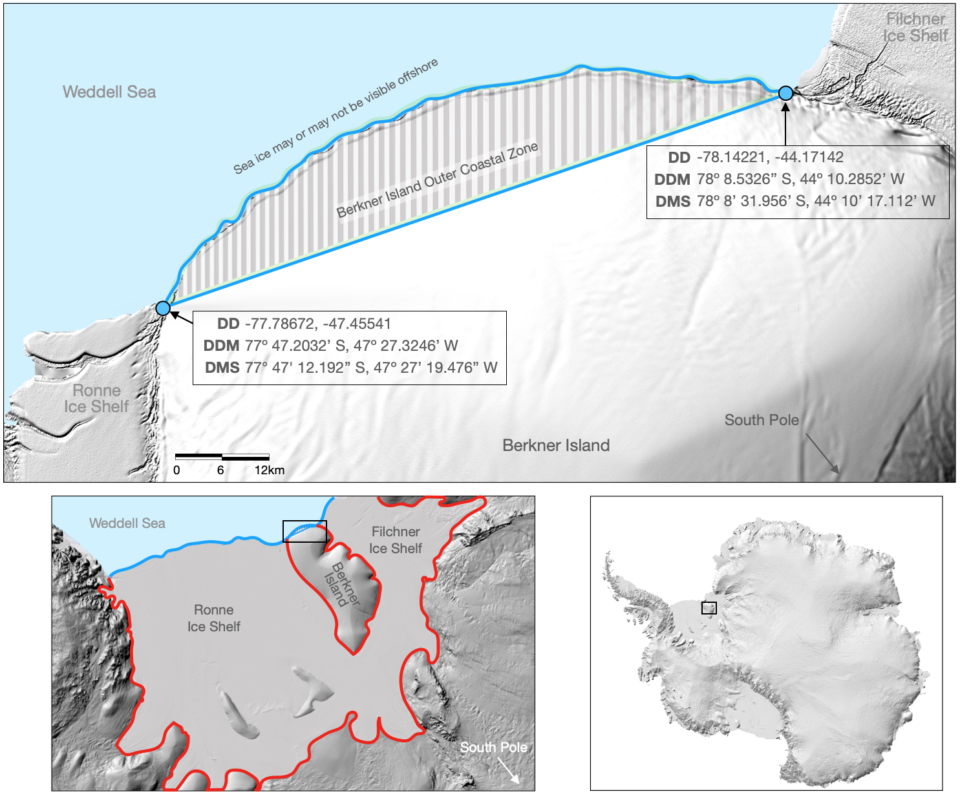
First used in 1990 by a Norwegian dogsled expedition, Berkner Island separates the Ronne and Filchner Ice Shelves in West Antarctica.
Located approximately 815km ENE of Union Glacier Camp and approximately 1380km from the South Pole, Berkner Island is one of the most common start points for full-length South Pole expeditions.
Journeys using north Berkner Island, and intending to complete a full South Pole expedition or full crossing of Antarctica, must start/end within the Berkner Island Outer Coastal Zone, an area of approximately 700km2 bound by the island’s seaward coastline and a straight line extending between the junctions of the Ronne and Filchner Ice Shelves.
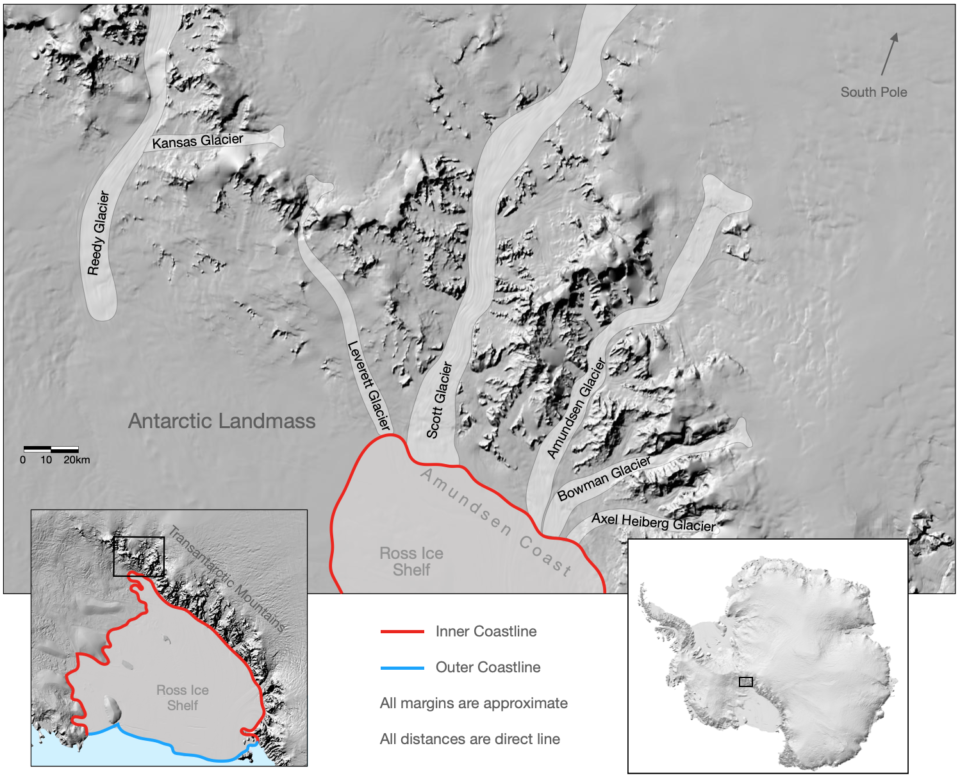
First traversed in 1911 by Norwegian Roald Amundsen’s South Pole expedition, the Amundsen Coast is located on the southeast perimeter of the Ross Ice Shelf in West Antarctica.
Located approximately 1000km SW of Union Glacier Camp, approximately 730km from the nearest sea and approximately 600km from the South Pole, the Amundsen Coast is the most common start/end area on the Ross Ice Shelf for South Pole expeditions and Antarctic crossings.
The Amundsen Coast offers a selection of glaciers that can be used to traverse the Transantarctic Mountains, most commonly the Leverett and Axel Heiberg. Such journeys must start/end on the Ross Ice Shelf.
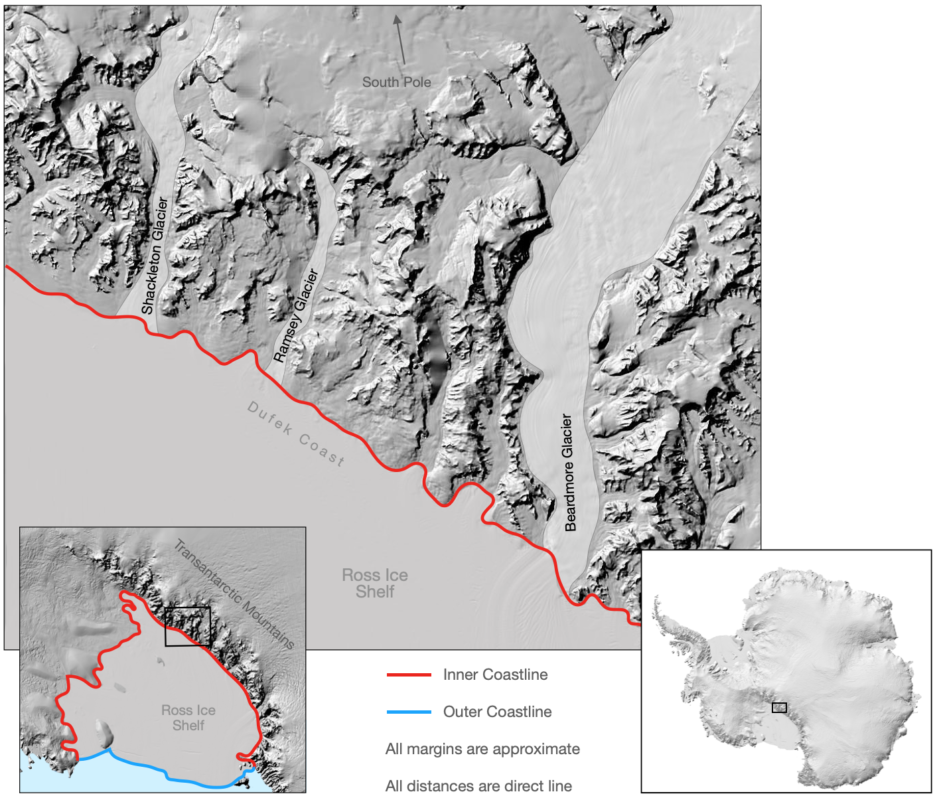
First traversed in 1908 by Ernest Shackleton’s Nimrod expedition, the Dufek Coast is located on the southern perimeter of the Ross Ice Shelf in West Antarctica.
Located approximately 1400km SW of Union Glacier Camp, approximately 650km from the nearest sea and approximately 650km from the South Pole, the Dufek Coast is an atypical start/end area on the Ross Ice Shelf for South Pole expeditions and Antarctic crossings.
The Dufek Coast offers a selection of glaciers that can be used to traverse the Transantarctic Mountains, most commonly the Beardmore and Shackleton. Such journeys must start/end on the Ross Ice Shelf.
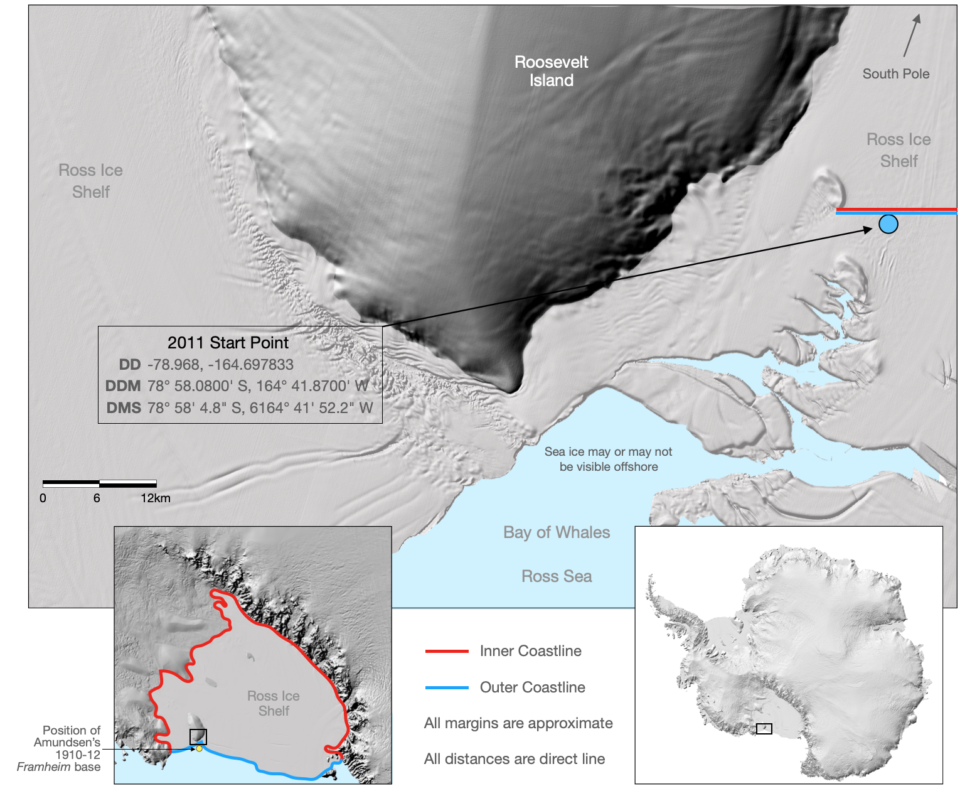
First used in 1911 by Norwegian Roald Amundsen’s South Pole expedition, Bay of Whales is located on the seaward coastline of the Ross Ice Shelf near Roosevelt Island in West Antarctica.
Located approximately 1450km west of Union Glacier Camp and approximately 1180km from the South Pole, Bay of Whales is not commonly used as a start or end point for full-length South Pole journeys.
This point, first used in 2011, is located on the Ross Ice Shelf and is close to a fracture zone. The start/end point may alter depending on ice conditions.
Roald Amundsen’s original Framheim base was located further north on a section of the Ross Ice Shelf that has since disintegrated.
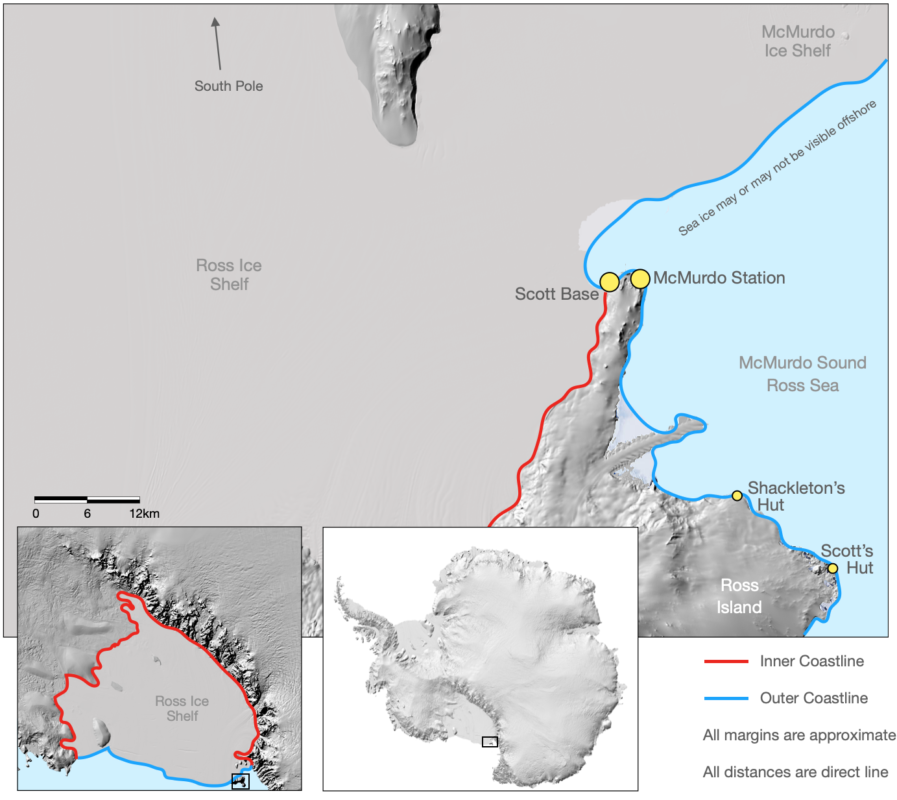
First used as a South Pole base by Captain Robert Scott’s Discovery Expedition from 1901-04, Ross Island is located on the northwest perimeter of the Ross Ice Shelf in West Antarctica.
Located over 2000km west of Union Glacier Camp and approximately 1350km from the South Pole, Ross Island was a common start point for historic journeys, most notably Scott and Shackleton’s expeditions, but is now rarely used.
Journeys using Ross Island, and intending to complete a full South Pole expedition or full crossing of Antarctica, must start/end on the seaward coastline of Ross Island or the Ross or McMurdo Ice Shelves. USA’s McMurdo Station and New Zealand’s Scott Base are located on the seaward coastline of Ross Island.
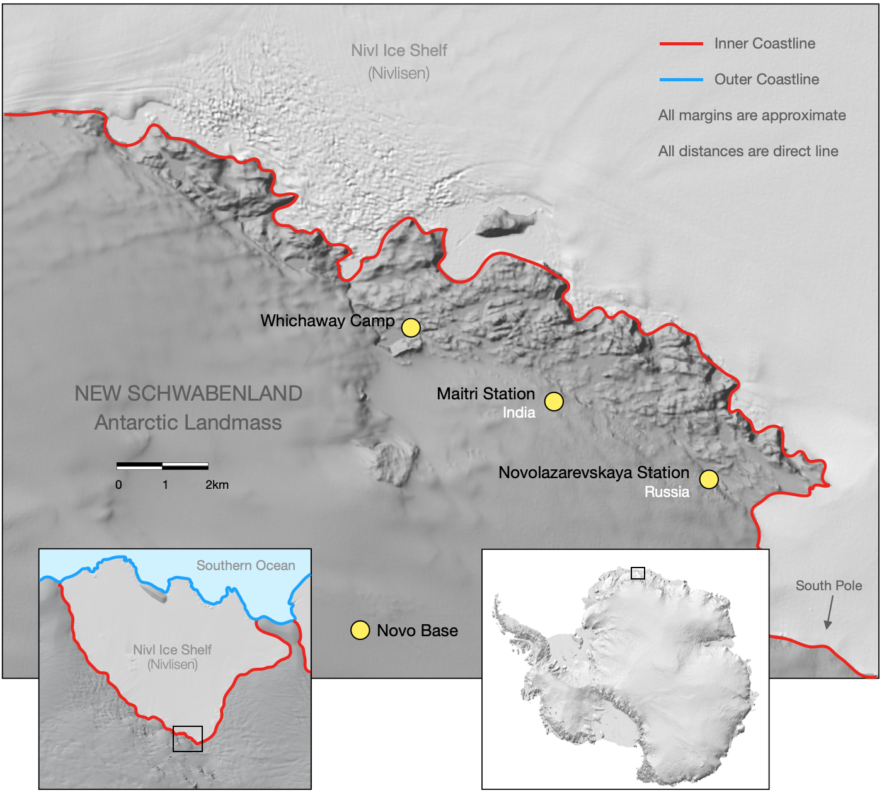
Novo is an airbase operated by Antarctic Logistics Centre International (ALCI). It is located in New Schwabenland in the Queen Maud Land region of East Antarctica.
Queen Maud Land was first used as a start point in 1997 when a Belgian expedition began from the now decommissioned Roi Baudouin Station. Other locations in QML have been utilised but the most common is Novo which was first used as an unmotorised Antarctic crossing start point in 2004 by Canadian polar guide Paul Landry and his team.
Located approximately 9km inland of the Nivl Ice Shelf, approximately 85km from the sea and approximately 2140km from the South Pole, Novo is the most common start point in East Antarctica.
Journeys intending to complete a South Pole expedition or Antarctic crossing must start/end on the Nivl Ice Shelf.
Journeys intending to complete a Full expedition or crossing must start/end on or near the outer coastline of the Nivl Ice Shelf.
Journeys starting or ending at Novo Runway are considered Inland South Pole expeditions or Inland Antarctic crossings.
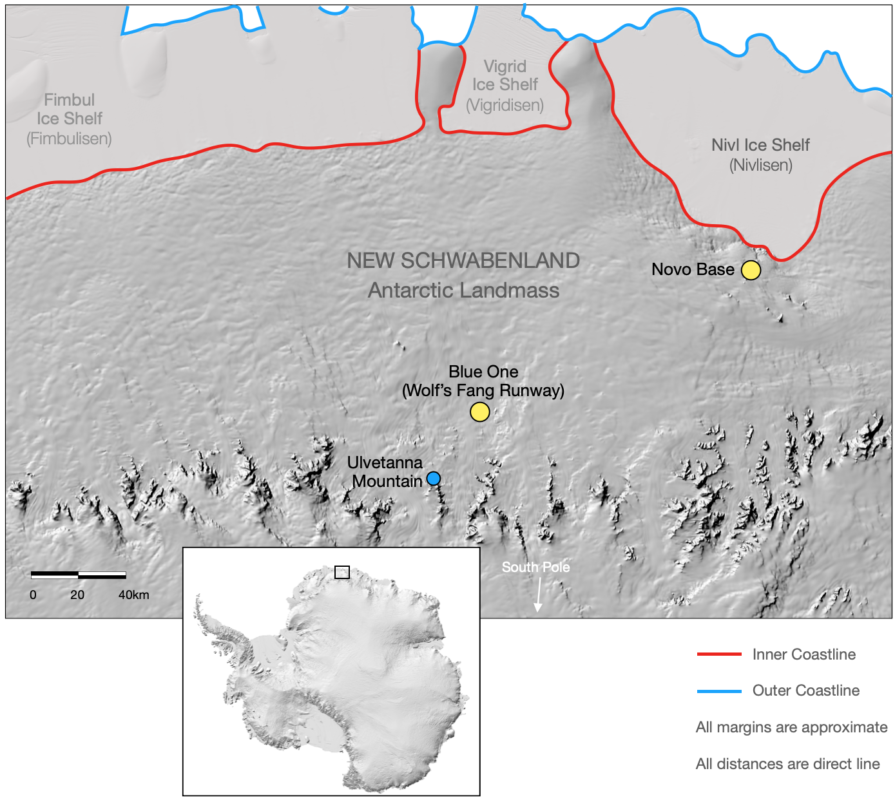
Blue One was a private camp and runway established by Adventure Network International in the 1990’s and used as a start point by a number of journeys. The camp was decommissioned and re-established as Wolf’s Fang Runway by White Desert Ltd in 2018.
Wolf’s Fang Runway is located 40km north of the Drygalski Mountains in New Schwabenland in the Queen Maud Land region of East Antarctica.
It is approximately 110km inland of the nearest inner coastline, approximately 160km from the sea and approximately 2100km from the South Pole.
Since Blue One was decommissioned Wolf’s Fang Runway has not been used as a start/end point. Any journeys starting or ending at Wolf’s Fang Runway are considered Inland South Pole expeditions or Inland Antarctic crossings.

The South Pole was first reached in 1911 by a Norwegian expedition led by Roald Amundsen.
USA established the Amundsen-Scott South Pole Station in 1956 and it was first reached overland in 1958 by Edmund Hillary’s New Zealand team as part of the Commonwealth Trans-Antarctic Expedition.
The first ski team to reach the South Pole overland in the modern era was The Footsteps of Scott Expedition in 1986.
The South Pole is an Antarctic Specially Managed Area (ASMA) in which transit is prohibited or restricted. All overland journeys must approach the South Pole using established routes and waypoints.
Overland journeys must also collect and store their human waste and grey water between 89º and 90º S.